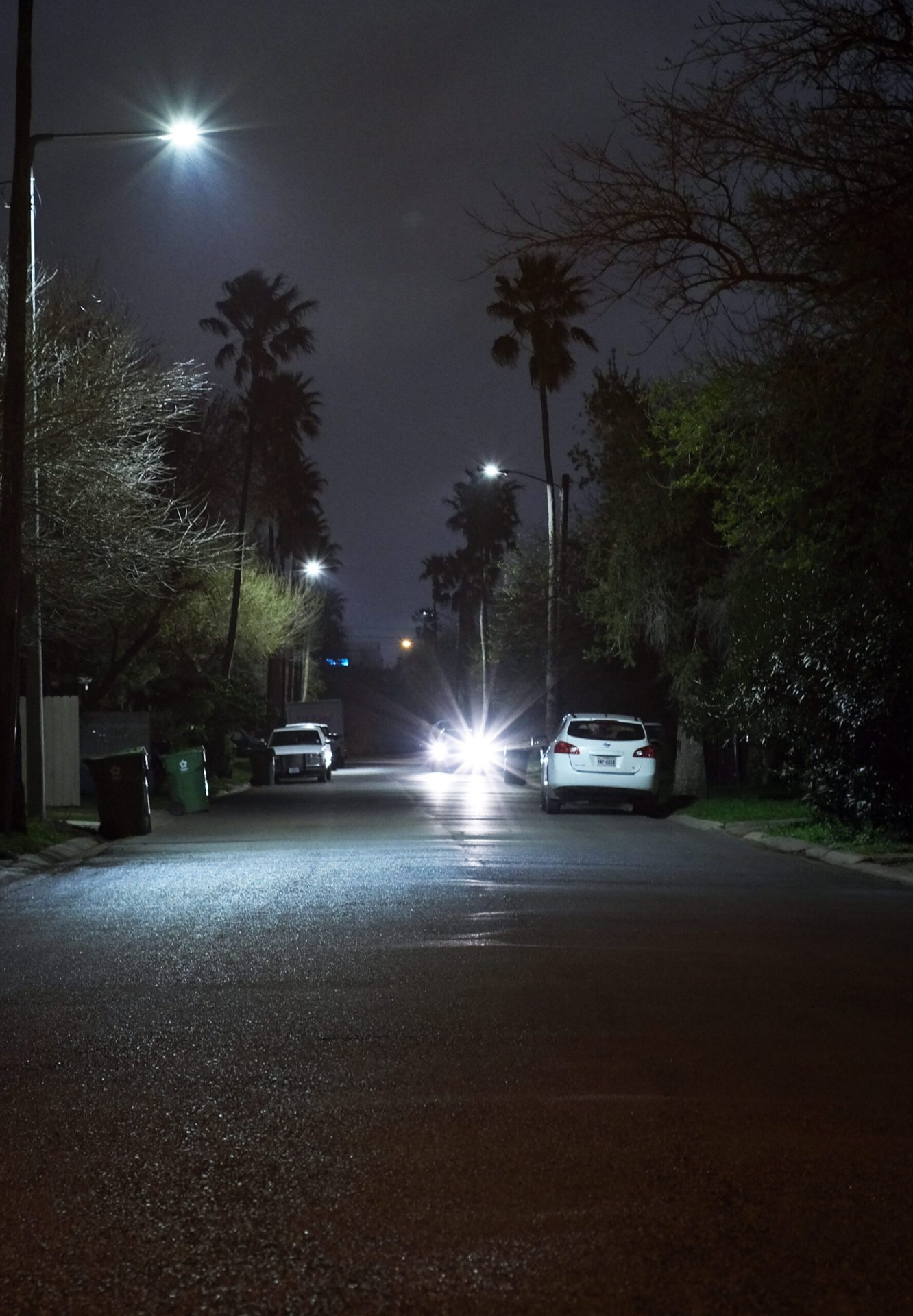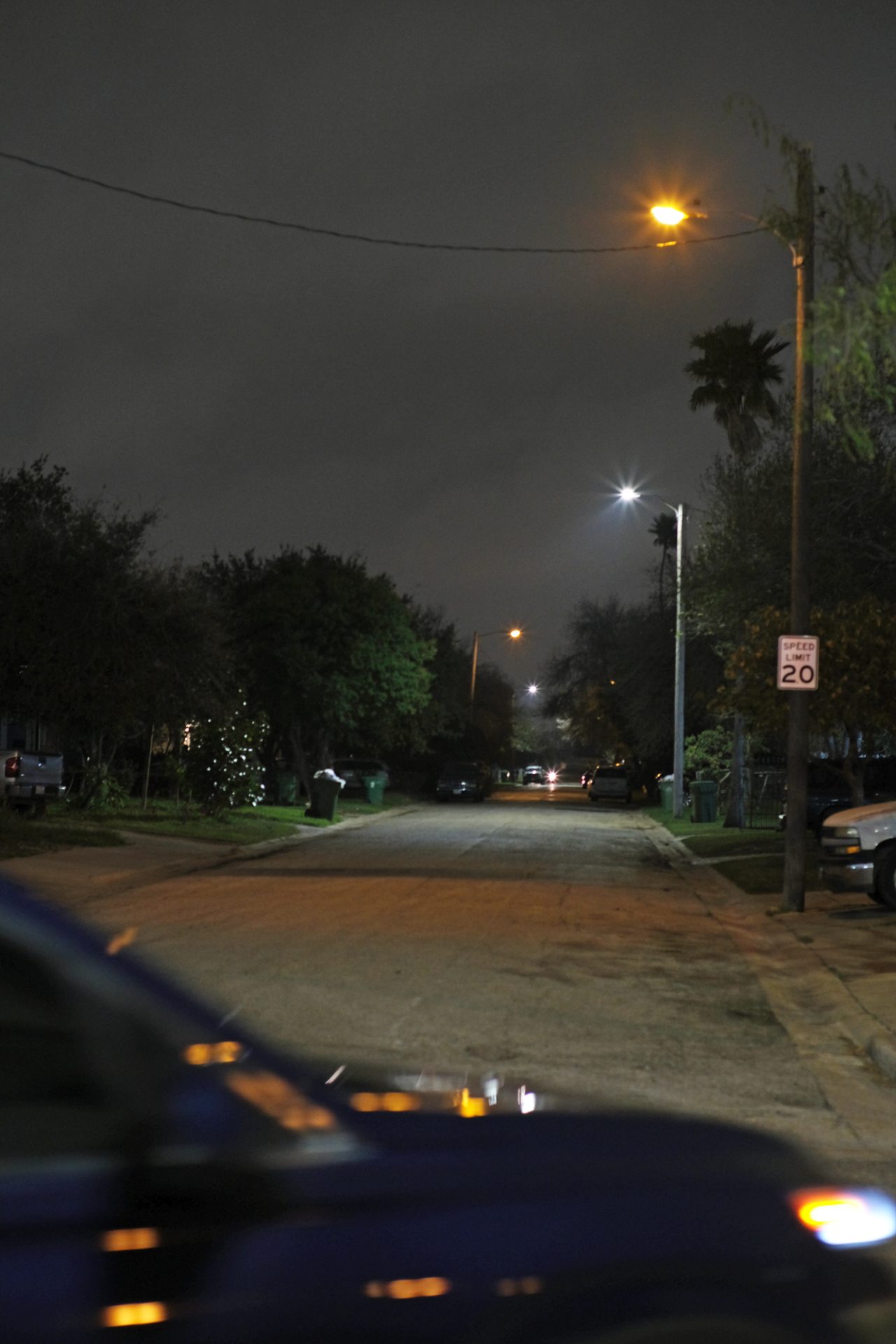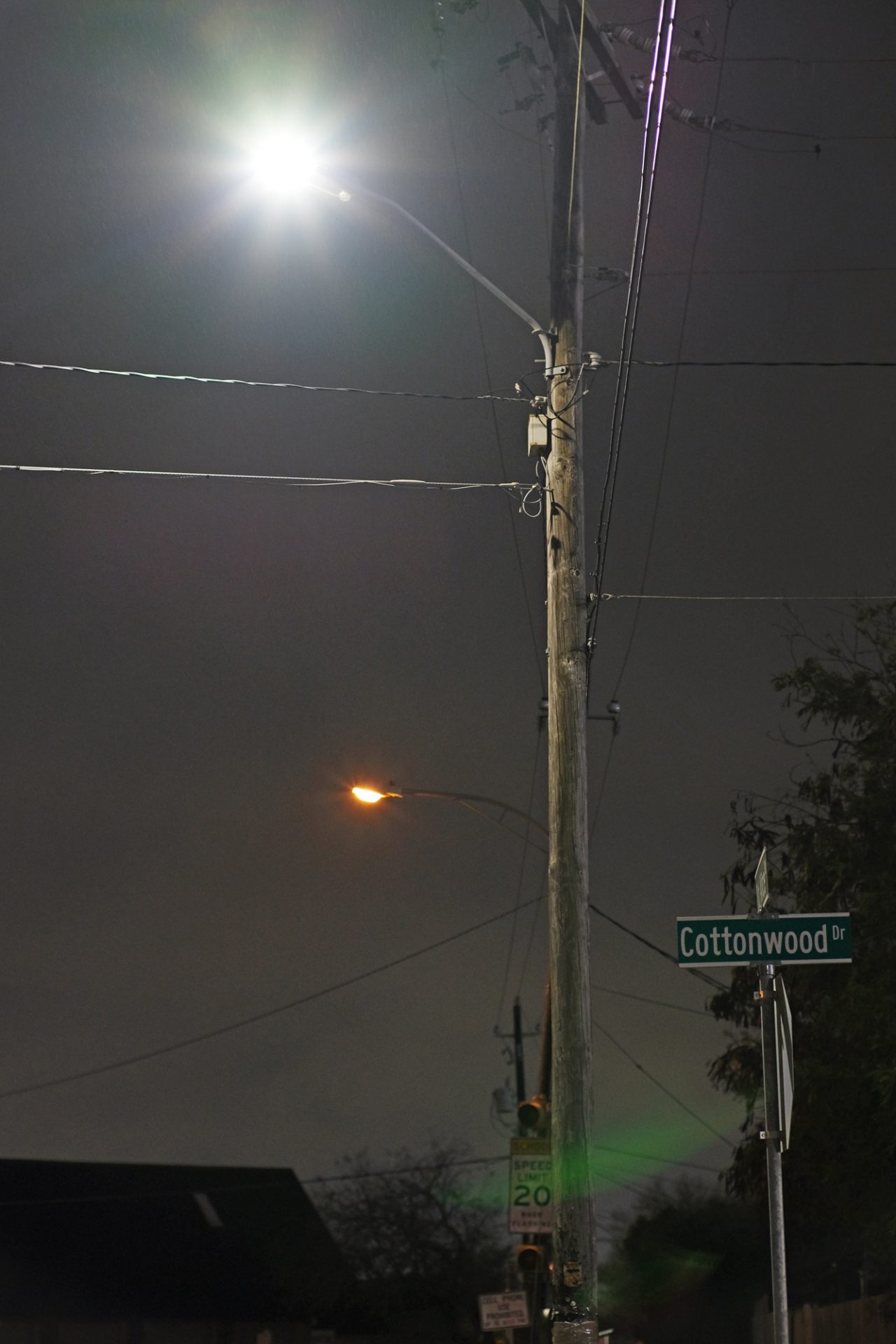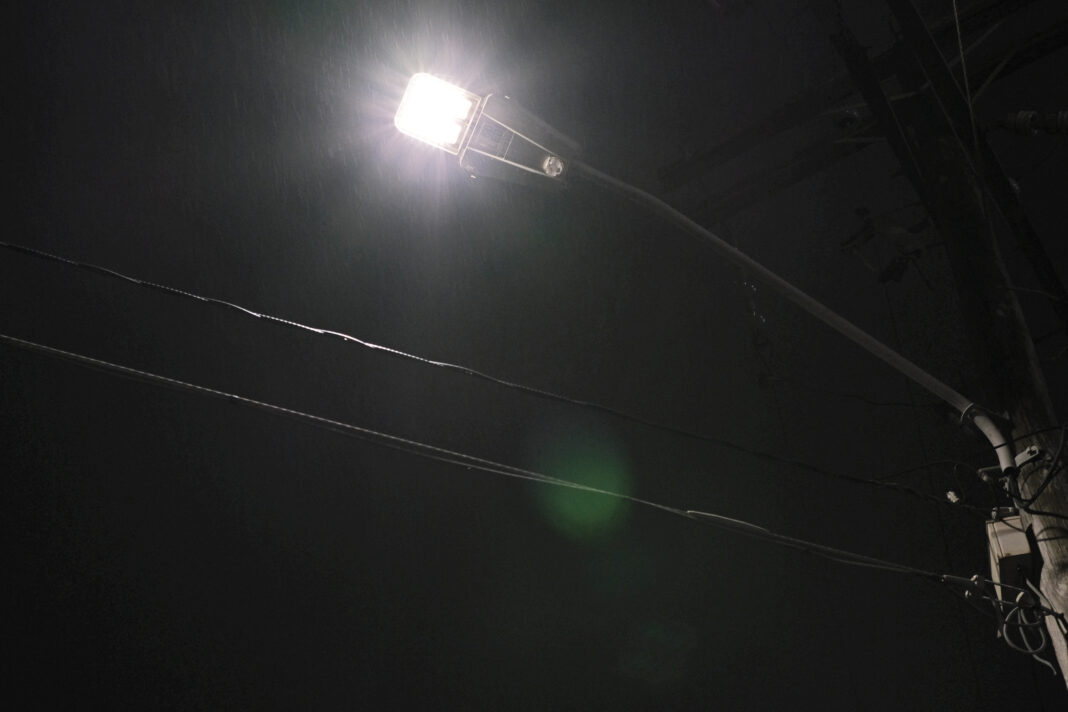Super bright, energy-efficient LED street lights are beginning to replace Brownsville’s old high-pressure sodium-vapor lights, which have been in widespread use for about 50 years.
It’s easy to tell which is which. The LED — light-emitting-diode — luminaires emit a bright white light compared to the warm yellow glow of the older lights. Cities around the country began switching to LEDs many years ago because they’re cheaper to operate, last longer and require less maintenance. Those are among the reasons the city of Brownsville is moving to LEDs.
“It’s innovation basically,” City Engineer Doroteo Garcia Jr. said. “We’re looking at ways to cut our costs. The city pays the light bill on these street lights. Our department is the one that manages the street lights.”

Brownsville Public Utilities Board is doing the work, replacing the old lights when they stop working or when a resident requests one through the city. The new LED luminaires can be seen aboard BPUB bucket trucks around town, ready for installation.
BPUB spokesman Ryan Greenfeld said 5,661 of Brownsville’s 11,717 sodium-vapor street lights had been replaced with LED luminaires as of Feb. 24, and that it’s estimated the city will be 100 percent LED within two and half years. The city currently pays BPUB a flat rate of $20,550 for street lights.
Per city ordinance 102-204(b), 10 years after the LED conversion is complete the city will be billed monthly based on fixture size and type — $7.14 a month for a 40-watt fixture compared to $10.07 for a 200-watt fixture, for instance.
Garcia said the new lights eventually will pay for themselves because they’re less costly to operate. As for public response, he admitted that “it’s mixed.”
“Some people love them,” Garcia said. “Some people are glad their area is fully lit. When an area is fully lit they tend to feel safer. That’s one of the comments that we do a get a lot: ‘Thank you for lighting up our area.’”

Others complain that the higher intensity LED light coming through their windows at night makes it hard to sleep, or that the spillover light is too intense, even if the LEDs illuminate roughly the same area as the old lights, he said.
“That’s what we don’t know how to deal with yet,” Garcia said. “They do sell different types of LED lights that light up just specific areas, if you look at the (Brownsville) Sports Park and Morningside Park. The light fixture is more expensive.
“Basically the light fixture just gets more expensive and what it does is it reduces the overall coverage of the light. Basically what you’re doing is you’re adding blinders to a horse, to kind of guide the light in a certain direction.”
He attributes the relatively small number of complaints so far to the BPUB crews installing the lights, who Garcia said are sensitive to residents’ concerns.
“I think the reason we don’t have so many complaints is they look at these issues when they’re doing these lights,” he said. “They don’t just put them up and move on. I think overall in the city our response time to citizen concerns has greatly increased in the last couple of years.”
Victor De Los Santos, executive director of the South Texas Astronomical Society, said the city can’t be blamed for wanting to cut costs, though he worries the brighter lights will worsen Brownsville’s light pollution — “definitely not good news” from an astronomer’s perspective.
“There’s a word for the wasted light: It’s ‘sky glow,’” De Los Santos said. “The LED is going to help people see more. They have it for a reason. But there also is a large amount of energy that is just thrown up at the sky and completely unused.”

Matamoros contributes substantially to Brownsville’s sky glow, especially on the south side. The University of Texas Rio Grande Valley observatory was relocated from campus to Resaca de la Palma State Park due to light pollution, and now the park itself is being affected by it, De Los Santos said.
STAS launched an initiative in 2019 to help Brownsville become officially designated as an International Dark-Sky Community by the International Dark-Sky Association, an effort that was sidelined by the pandemic, though De Los Santos hopes to rekindle the effort.
The IDA Texas Chapter lists 15 Dark-Sky Places, or locations where the stars are exceptionally visible at night, in the state. Senate Bill 1090, signed into law last year by Gov. Greg Abbott, makes it easier for communities to pursue Dark-Sky designation.
Flagstaff, Ariz., considered a poster child of the U.S. Dark-Sky movement, also uses LED street lights, though that municipality strictly controls how and what type of LED lighting is used, favoring “narrow-band amber” LED lights rather than those that produce white light.
De Los Santos said it’s no one’s intent to mess with astronomers — or night-migrating birds, which are disoriented by sky glow according to scientific research — and he feels confident a solution can be found.
“I’m not against the city,” he said. “I want to make it clear that we’re partners. I’m positive that we can work in the future to figure something out. … If you have the right technology it’s not a problem.”




